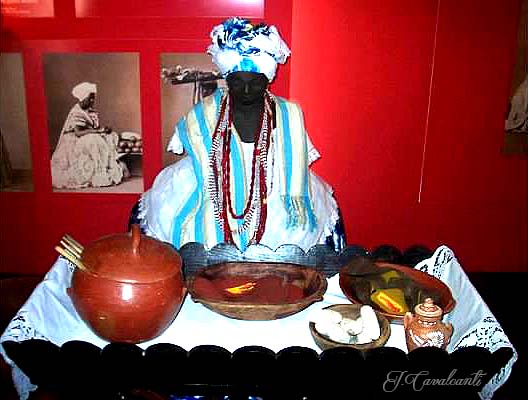The oil palm is native to tropical Africa, from Sierra Leone in the west through the Democratic Republic of Congo in the east. It was domesticated in its native range, probably in Nigeria, and moved throughout tropical Africa by humans who practiced shifting agriculture at least 5000 years ago. European explorers discovered the palm in the late 1400's, and distributed it throughout the world during the slave trade period. In the early 1800s, the slave trade ended but British began trading with west Africans in ivory, lumber, and palm oil. The oil palm was introduced to the Americas hundreds of years ago, where it became naturalized and associated with slave plantations, but did not become and industry of its own until the 1960s. The first plantations were established on Sumatra in 1911, and in 1917 in Malaysia. Oil palm plantations were established in tropical America and west Africa about this time, and in 2003, palm oil production equaled that of soybean, which had been the number one oil crop for many years.
Bahian Cuisine
J.Cavalcanti Bahiana
Bahian food has the influence of Portuguese, African and Indian cultures with a majority of local exotic ingredients. It is characterized by the generous use of malagueta chili peppers and dende oil extracted from an African palm tree.
Must try to taste some typical dishes from Bahia - Brazil. You won't regret - they are simply delicious!!
Brazil Food - Northeast Brazil
The Northeast region of Brazil includes Sergipe, Alagoas, Piaui, Maranhao, Ceara, Pernambuco, Bahia, Paraiba, and Rio Grande do Norte. Popular dishes here are heavily influenced by the origins of Amerindian, African, and Portuguese cuisine.
Popular dishes:
Muqueca - literally translated means "stew" and is a seafood stew that has been made in Brazil for over 300 years now. It contains seafood, garlic and onions, olive oil, cilantro, tomato, peppers, coconut milk, dende oil and is cooked slowly. It is generally served with rice.
Acarajé is made from black eyed peas that are rolled into a ball and fried, and stuffed with condiments, salads and sauces. Some fillings contain shrimp, some are vegetarian. This dish is a populra street food in Brazil.
Vatapá - This mixture of bread, coconut milk, dried shrimp, peanuts, shrimp and dende oil is enjoyed in other regions of Brazil as well. In the Northeast it is enjoyed with acarajé.
Feijoada (black beans) is one of Brazil's national treasures. This is a dish that is meant to serve a group, and the preparation begins the night before. Several kinds of smoked meats, ribs, and beef jerky are simmered with the black beans. The meats are removed and served separately on a platter. The other traditional accompaniments are Brazilian-style rice, farofa (toasted manioc meal), hot pepper sauce, and orange wedges (to help with digestion).
Friday, June 3, 2011
Palm oil / Dende oil
The oil palm is native to tropical Africa, from Sierra Leone in the west through the Democratic Republic of Congo in the east. It was domesticated in its native range, probably in Nigeria, and moved throughout tropical Africa by humans who practiced shifting agriculture at least 5000 years ago. European explorers discovered the palm in the late 1400's, and distributed it throughout the world during the slave trade period. In the early 1800s, the slave trade ended but British began trading with west Africans in ivory, lumber, and palm oil. The oil palm was introduced to the Americas hundreds of years ago, where it became naturalized and associated with slave plantations, but did not become and industry of its own until the 1960s. The first plantations were established on Sumatra in 1911, and in 1917 in Malaysia. Oil palm plantations were established in tropical America and west Africa about this time, and in 2003, palm oil production equaled that of soybean, which had been the number one oil crop for many years.








